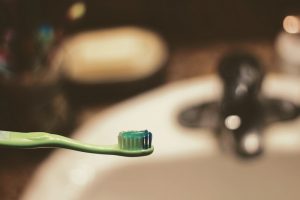 Buying a tube of toothpaste can seem overwhelming when looking for the best option for your little ones, especially when you aren’t sure which ingredients are helpful and which are harmful. We’ve made a helpful toothpaste guide to understanding toothpaste and how to select the right one for your child’s smile.
Buying a tube of toothpaste can seem overwhelming when looking for the best option for your little ones, especially when you aren’t sure which ingredients are helpful and which are harmful. We’ve made a helpful toothpaste guide to understanding toothpaste and how to select the right one for your child’s smile.
Pediatric dental care is important to a child’s development, so when you notice your child’s first tooth, be sure to contact your child’s dentist so we can help you start the journey off on the right foot.
Understanding Ingredients
Many people assume that all kinds of toothpaste are the same, and yet the toothpaste aisle is filled with so many different choices. This is because certain kinds of toothpaste are formulated to tackle different dental concerns. Here are some of the common ingredients shared by most kinds of toothpaste and how they may affect your children’s teeth:
Abrasive agents are particles that gently scrub away plaque, left-over food, and harmful bacteria from teeth to create a smooth polished surface. Be careful when selecting an abrasive toothpaste as it may be too harsh for baby teeth and lead to gum erosion.
Artificial sweeteners help make toothpaste taste sweet without causing tooth decay. Toothpaste comes in a variety of flavors that your kids will love such as bubblegum, lemon-lime, various fruit flavors, and even mint.
Thickening agents or chemicals are used to create that texture and distinct shape we associate with toothpaste. Sometimes children’s toothpaste includes more of these ingredients to make it easier for children to manage.
Detergents are ingredients in toothpaste responsible for creating suds or foam when brushing your teeth.
Fluoride is a naturally occurring mineral that we have used for over 50 years to prevent tooth decay and cavities. Children are subject to tooth decay the moment their teeth arrive, so you should begin good oral habits once the first tooth arrives. Fluoride is often used in toothpaste to help strengthen enamel and to ensure proper development in the teeth. If you have a fluoride-free home, you will want to select a fluoride-free toothpaste that contains remineralization agents such as calcium, phosphorus, bentonite clay, and sodium bicarbonate to help provide protection against cavities.
While these types of ingredients are common, not all are necessary. When selecting a toothpaste for your child, we recommend avoiding the following ingredients as they can be potentially harmful:
Triclosan- This antiseptic is often added to toothpaste to help prevent gingivitis. While it is FDA approved, it is believed to be an endocrine disruptor similar to BPA. Other claims against triclosan include links to liver fibrosis and cancer in mice, development of allergies to certain foods, and bacterial resistance to antibiotics.
FD&C Blue 1- This additive is responsible for toothpastes that are the picturesque cool mint blue. This synthetic dye can accumulate over time in the body with unknown risks and effects. Many food dyes have been linked to ADHD, allergies, and even cancer, so it is best to avoid this potentially dangerous and unnecessary additive.
Sodium Lauryl Sulfate (SLS)- This detergent is a more common ingredient in toothpaste. While SLS does not pose any serious or long-term risks to health, it can contribute to the development of canker sores.
Toothpaste Varieties
Many kinds of toothpaste on the market target dental concerns such as teeth whitening and tartar control. Unfortunately, not every toothpaste is suitable for children.
Remember to buy versions that are marketed and produced specifically for children. Children’s toothpaste often contains lower amounts of fluoride making it safe to swallow and come in a variety of flavors and colors to help children enjoy practicing good oral health habits.
If you are unsure which product your children will like more, buy various small tubes so they can pick one that they like.
Using the Right Amount
It is important to follow the age-based portions regardless of which toothpaste you select. Children under the age of 3 should only use a smear of toothpaste, no larger than a grain of rice.
After the age of 3, the portion can be increased to a pea-sized amount. We also recommend supervising your children during dental routines until the age of 8 to ensure that they are brushing and flossing their teeth properly.
We are always here to help offer advice on how to best protect your children’s smiles. If you have any questions or if you would like to schedule an appointment, contact NoPo Kids Dentistry today.
